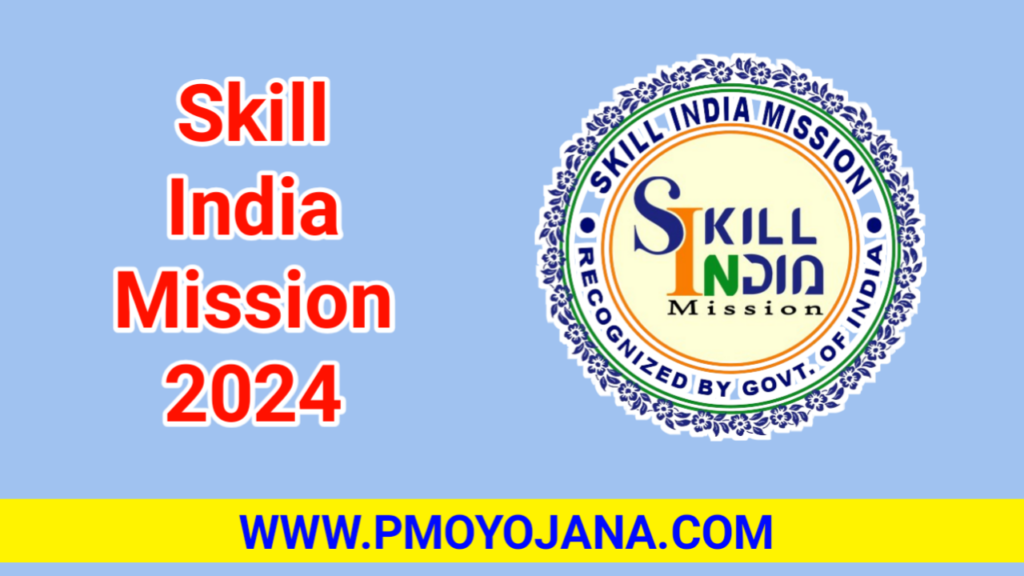Introduction
Skill India Mission 2024: Launched in July 2015, the Skill India Mission aims to equip the youth of India with the necessary skills to enhance their employability and drive economic growth.
With a growing population and an increasing demand for skilled workers, this mission is crucial in addressing the skills gap in various sectors of the Indian economy. The initiative seeks to create a robust framework for skill development, fostering a workforce that meets the needs of employers.
Objectives of Skill India Mission
Primary Goals of the Mission
The primary objectives of the Skill India Mission include:
- To train over 400 million individuals in various skills by 2022.
- To promote skill development as a viable career path and improve the overall quality of education in vocational training.
Target Beneficiaries
The mission primarily targets youth aged 15 to 29 years, including school dropouts, unemployed individuals, and those seeking to enhance their existing skills. Special emphasis is placed on women and marginalized communities to ensure inclusive growth.
Key Features of Skill India Mission
1. Skill Training Programs and Initiatives
Skill India encompasses various training programs, including:
- Pradhan Mantri Kaushal Vikas Yojana (PMKVY): A flagship scheme offering short-term training and certification in specific skills.
- National Skill Development Mission (NSDM): A broader initiative aimed at enhancing skill development policies across the nation.
2. Collaboration with Industries and Organizations
The mission promotes partnerships with various industries, academic institutions, and organizations to develop training modules aligned with market demands. Collaborating with the private sector ensures that the training programs are relevant and effective.
Implementation Strategy
Government Agencies Involved
The Skill India Mission is implemented by several government agencies, including the Ministry of Skill Development and Entrepreneurship (MSDE), the National Skill Development Corporation (NSDC), and various state skill development missions.
Role of Private Sector and NGOs
The private sector and non-governmental organizations (NGOs) play a crucial role in providing training, resources, and expertise. Their involvement enhances the reach and quality of skill training programs.
Impact on Employment Opportunities
Increase in Job Creation
The Skill India Mission has significantly contributed to job creation by providing individuals with the skills required in various sectors, thereby reducing unemployment rates. Training programs are designed to meet the needs of growing industries such as manufacturing, hospitality, and IT.
Enhancing Employability of Youth
By equipping the youth with relevant skills, the mission enhances their employability, enabling them to secure better job opportunities. The focus on practical skills and hands-on training ensures that graduates are job-ready.
Focus Areas for Skill Development
Priority Sectors Identified
The mission emphasizes skill development in priority sectors, including:
- Manufacturing
- Construction
- Information Technology
- Health and Wellness
Special Emphasis on Rural and Underserved Areas
Recognizing the challenges faced by rural populations, the mission aims to provide skill training in remote areas, ensuring that the benefits of skill development reach underserved communities.
Challenges and Solutions
Common Challenges Faced in Implementation
Despite its successes, the Skill India Mission faces several challenges, including:
- Lack of awareness among potential beneficiaries about available training programs.
- Inadequate infrastructure and resources in certain regions.
Proposed Solutions to Enhance Effectiveness
To overcome these challenges, the following solutions are proposed:
- Awareness Campaigns: Launching targeted awareness programs to educate the youth about skill development opportunities.
- Infrastructure Development: Investing in training centers and facilities in rural and underserved areas to ensure accessibility.
Success Stories
Case Studies of Individuals and Communities
Numerous success stories highlight the transformative impact of the Skill India Mission. For instance, young individuals who received training through PMKVY have successfully secured jobs in various sectors, improving their economic conditions and contributing to their communities.
Impact Assessments and Testimonials
Regular impact assessments showcase the mission’s effectiveness, with testimonials from beneficiaries highlighting their enhanced skills, job placements, and improved quality of life.
Future Prospects of Skill India Mission
Upcoming Initiatives and Programs
The government plans to introduce additional initiatives aimed at advancing skill development, focusing on emerging technologies and sectors to prepare the workforce for the future.
Long-Term Vision for Skill Development in India
The long-term vision of the Skill India Mission is to create a skilled workforce that drives innovation, economic growth, and sustainable development, making India a global hub for skilled labor.
Conclusion
The Skill India Mission is a pivotal initiative aimed at empowering the youth of India with the skills necessary for the job market. By focusing on inclusive growth, enhancing employability, and promoting partnerships with industries, the mission plays a vital role in shaping the future workforce. As India progresses towards its goal of becoming a skill-driven economy, the active involvement of all stakeholders is essential to ensure the mission’s success and sustainability.
FAQs
1. What is the main goal of the Skill India Mission?
The main goal is to train over 400 million individuals in various skills to enhance employability and drive economic growth.
2. Who are the target beneficiaries of the Skill India Mission?
The mission primarily targets youth aged 15 to 29 years, including school dropouts, unemployed individuals, and marginalized communities.
3. What are some key training programs under the Skill India Mission?
Key programs include the Pradhan Mantri Kaushal Vikas Yojana (PMKVY) and the National Skill Development Mission (NSDM).
4. How does the private sector contribute to the Skill India Mission?
The private sector collaborates with the government to develop training modules and provide resources, enhancing the effectiveness of training programs.
5. What challenges does the Skill India Mission face?
Common challenges include lack of awareness, inadequate infrastructure, and access to training programs in rural areas.

1 thought on “Skill India Mission 2024: Empowering the Workforce of Tomorrow”